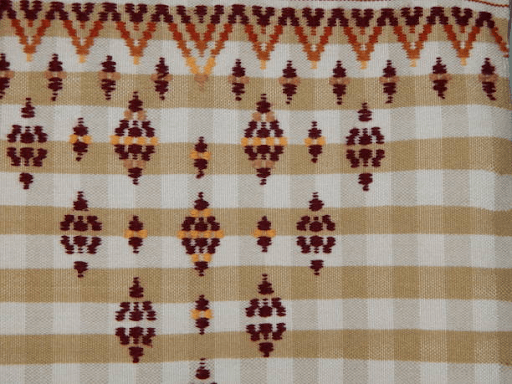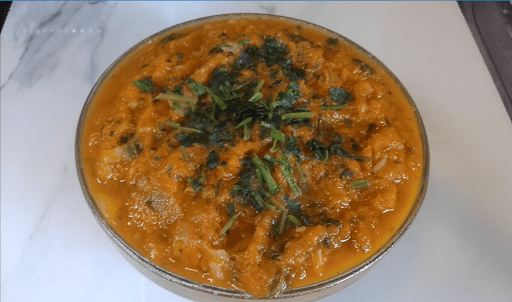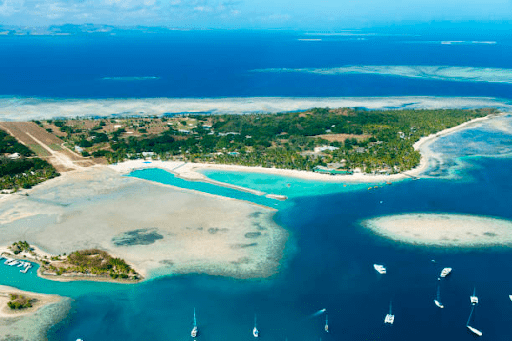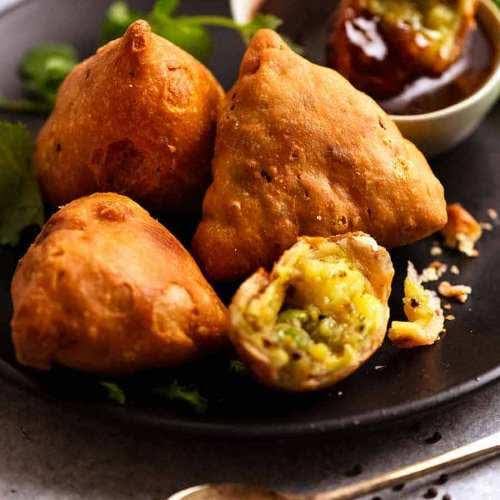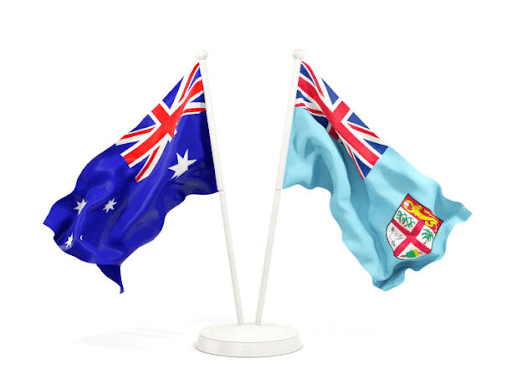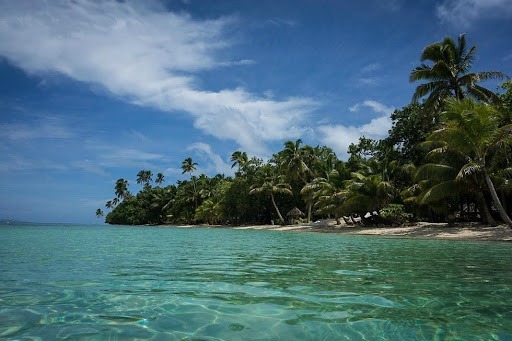Vatulele’s many wonders
Located 32 kilometres south of Viti Levu, lies the raised coral limestone and volcanic island of Vatulele. The island is occupied by four villages, Lomanikaya, Ekubu, Taunovo and Bouwaqa. Although Vatulele has been mainly accepted as the major origin of masi making in Fiji, it is prominently known for its extraordinary legend of the Red Prawns and mysterious Petroglyphs.

Mysterious Petroglyphs of Vatulele
These artistic rock carvings date back 3000 years ago and have caught the attention of numerous archeologists and researchers. One of the prominent petroglyphs, a face with 12 ‘hairs’ on the island’s limestone walls which locals call Bainivualiku, which was used as the logo of the now-closed Vatulele Island Resort. Close to this rock carving, it includes a series of 95 painted images of faces, human figures, human palms, canoes, birds, fish, turtles, leaves and abstract symbols.
According to the former director of Fiji Museum, Fergus Clunie (1986), the shape of the heads of Vatulele share some resemblance, those from Tonga (Ha’apai Group), which are in turn like the shape of heads on some of the figures found in Fiji after Western contact. The maroon paint used in the artistic rock paintings is consistent with the use of the permanent color once used to rub on valuable items and bones to indicate ‘mana’ in the earlier period. Despite researchers’ attempt to retrace the origin of these petroglyphs, the Vatulele paintings remain a mystery as they possess no links to current chants, legends, meke and artwork passed down by ancestors.
However, there have been indications that the petroglyphs may have had ritualistic importance since they are artistically painted within the proximity of the pond of the sacred red prawns and the narrow double cliff pass which is known by locals as ‘calevu ni yalo’ (spirit pathways).
Although some animals are illustrated, the absence of the red prawn in the artwork may suggest they were taboo, and the inhabitants were not permitted to take it out of its pond. The restriction may have also extended to not being allowed to depict them in any form.
Although no single soul has come close to distinguishing the identity of the artists and the origin of the artworks’ age and significance, their existence in Vatulele is enough to be a point of great importance, worth visiting.
The Majestic Red Prawns of Vatulele
A few hundred meters away, within the proximity of the artistic paintings, lie another wonder–cavernous rocks safeguarding anchialine pools. Locally known as toba ni ura buta, home to the extraordinary red prawns of Vatulele, which one must see to believe. The prawns are locally referred to as ura buta (cooked prawns) or ura damudamu (red prawns).
Legend has it that the scarlet prawns are linked to the daughter of a chief called ‘Yalewa ni Cagi Bula’ which means maiden of the fair wind. Her attractive charm was acknowledged across the islands, and eligible chiefs throughout the land sought her hand in marriage. However, the maiden’s beauty was only skin deep as she was contemptuous and rejected every suitor.
In the mainland of Viti Levu resided the son of a prominent chief who was heir to the throne of the mainland tribes. Upon hearing the story of the fair maiden, he endeavored to pursue her earnestly as he believed that she was the only one worthy of becoming his bride.
Staying true to Itaukei tradition, he ventured to Vatulele to bestow his proposal to the beautiful Yalewa ni Cagi Bula. Amongst the variety of fine gifts he brought, was a selection of ura buta, massive red prawns from the coastal stream of Viti Levu, wrapped delicately in leaves and prepared in a coconut milk sauce. This meal was a rare delicacy befitting a maiden of such exquisite charm and position.
However, the attempts made by the young suitor were to no avail as Yalewa ni Cagi Bula rejected and was infuriated over the gifts and commanded that her ladies-in-waiting throw the gentleman off the cliff above Ganilau (caves of the eagles). As he fell into the sea below, the delectable red prawns fell into a rocky pool from his hands.
The young suitor survived the fall and returned to the mainland with a broken heart. Every day he would gaze with a yearning heart towards the distant land of Vatulele, and mourn the loss of the fair maiden he had once pursued.
Once, in desperation, the young man attempted to construct a bridge of stone to reach his love. However, the attempt was unsuccessful, but he managed to build a rock foundation on the shores of Viti Levu near the village of Votualailai that still stands.
As for the red prawns, they revived as they landed in the rocky pool. Scientists are still amazed by the environment that the prawns inhabit. Known as anchialine habitats, they are pools some distance away from the sea but which still maintain tidal influence. In actuality, most of the pools are brackish due to interactions between the lens of freshwater under the island and the tidal influence. Linked with these anchialine pool is a great network of caves and passages, most of them virtually unexplored.
The islanders treat the prawns with great respect and consider them sacred and are forbidden to steal, bother, harm or kill. As legend has it, anyone who dares to go against the restrictions will be shipwrecked, which in a nation consisting of over 330 islands, is a bad curse indeed.
Vatulele Tapa Making
Vatulele has much more to offer than its red prawns, extraordinary though they are. It is home to Fiji’s most skillful makers of tapa cloth (masi). The masi comes from the bark of the paper mulberry tree and all over the island there are small clearings in the forest which have been planted with this tree. A visit to any of the Vatulele’s four villages will bring with it the endless sound of heavy wooden clubs repeatedly pounding against a hard surface. If one gains enough courage to venture inside the tin shed from whence the sound comes, one will witness the sights of a woman pounding strips of bark, flattening and softening the fibers enough to make into the highest quality masi. Nearby, giant cauldrons full of dye made from mangrove bark are used to incorporate traditional designs consisting of triangles which have become one of the prominent symbols of the Vatulele Island resort.

